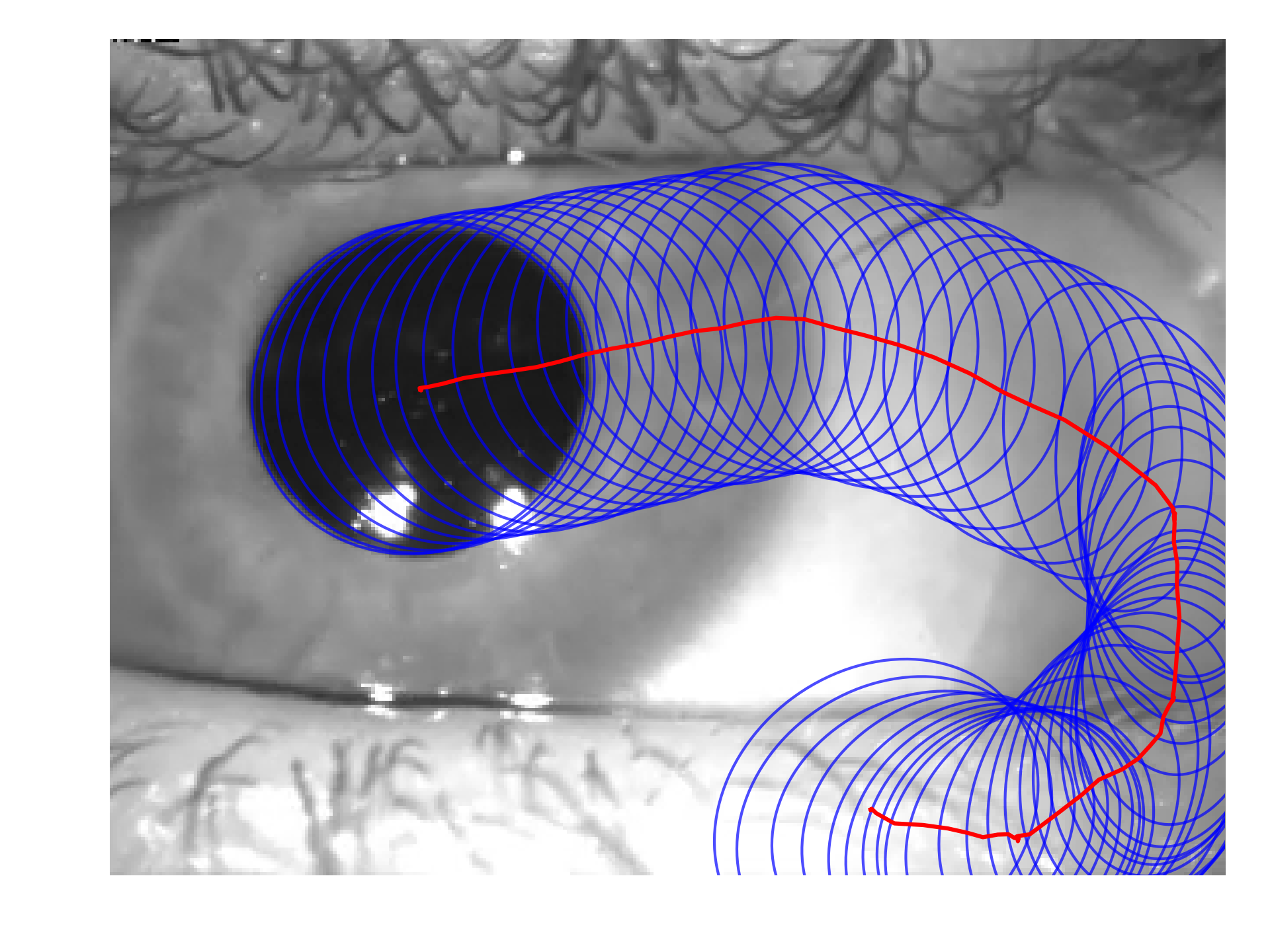These instructions will get you a copy of the project up and running on your local machine for development and testing purposes. See deployment for notes on how to deploy the project on a live system.
To run DeepVOG, you need to have a Python distribution (we recommend Anaconda) and the following Python packages:
numpy
scikit-video
scikit-image
tensorflow-gpu
keras
urwid (Not necessary if you do not use the Text-based user interface)
As an alternative, you can use our docker image which already includes all the dependencies. The only requirement is a platform installed with nvidia driver and nvidia-docker (or nvidia runtime of docker).
A step by step series of examples that tell you how to get DeepVOG running.
- Installing from package
$ git clone https://github.com/pydsgz/DeepVOG
(or you can download the files in this repo with your browser)
Move to the directory of DeepVOG that you just cloned/downloaded, and type
$ python setup.py install
If it happens to be missing some dependencies listed above, you may install them with pip:
$ pip install numpy
$ pip install scikit-video
$ ...
- It is highly recommended to run our program in docker. You can directly pull our docker image from dockerhub. (For tutorials on docker, see docker and nvidia-docker)
$ docker run --runtime=nvidia -it --rm yyhhoi/deepvog:v1.1.1 bash
or
$ nvidia-docker run -it --rm yyhhoi/deepvog:v1.1.1 bash
The CLI allows you to fit/infer single video, or multiple of them by importing a csv table. They can be simply called by:
$ python -m deepvog --fit /PATH/video_fit.mp4 /PATH/eyeball_model.json
$ python -m deepvog --infer /PATH/video_infer.mp4 /PATH/eyeball_model.json /PATH/results.csv
$ python -m deepvog --table /PATH/list_of_operations.csv
DeepVOG first fits a 3D eyeball model from a video clip. Base on the eyeball model, it estimates the gaze direction on any other videos if the relative position of the eye with respect to the camera remains the same. It has no problem that you fit an eyeball model and infer the gaze directions from the same video clip. However, for clinical use, some users may want to have a more accurate estimate by having a separate fitting clip where the subjects perform a calibration paradigm.
In addition, you will need to specify your camera parameters such as focal length, if your parameters differ from default values.
$ python -m deepvog --fit /PATH/video_fit.mp4 /PATH/eyeball_model.json --flen 12 --vid-shape 240,320 --sensor 3.6,4.8 --batchsize 32 --gpu 0
Please refer to doc/documentation.md for the meaning of arguments and input/output formats. Alternatively, you can also type $ python -m deepvog -h for usage examples.
DeepVOG comes with a simple text-based user interface (TUI). After installation, you can simply type in terminal:
$ python -m deepvog --tui
If it is successful, you should see the interface:
For more flexibility, you may import the module directly in python.
import deepvog
# Load our pre-trained network
model = deepvog.load_DeepVOG()
# Initialize the class. It requires information of your camera's focal length and sensor size, which should be available in product manual.
inferer = deepvog.gaze_inferer(model, focal_length, video_shape, sensor_size)
# Fit an eyeball model from "video_1.mp4". The model will be stored as the "inferer" instance's attribute.
inferer.fit("video_1.mp4")
# After fitting, infer gaze from "video_1.mp4" and output the results into "result_video_1.csv"
inferer.predict("video_1.mp4", "result_video_1.csv" )
# Optional
# You may also save the eyeball model to "video_1_mode.json" for subsequent gaze inference
inferer.save_eyeball_model("video_1_model.json")
# By loading the eyeball model, you don't need to fit the model again with inferer.fit("video_1.mp4")
inferer.load_eyeball_model("video_1_model.json") If you plan to use this work in your research or product, please cite this repository and our publication pre-print on arXiv.
- Yiu Yuk Hoi - Implementation and validation
- Seyed-Ahmad Ahmadi - Research study concept
- Moustafa Aboulatta - Initial work
- U-Net: Convolutional Networks for Biomedical Image Segmentation
- V-Net: Fully Convolutional Neural Networks for Volumetric Medical Image Segmentation
- A fully-automatic, temporal approach to single camera, glint-free 3D eye model fitting
This project is licensed under the GNU General Public License v3.0 (GNU GPLv3) License - see the LICENSE file for details
We thank our fellow researchers at the German Center for Vertigo and Balance Disorders for help in acquiring data for training and validation of pupil segmentation and gaze estimation. In particular, we would like to thank Theresa Raiser, Dr. Virginia Flanagin and Prof. Dr. Peter zu Eulenburg.

